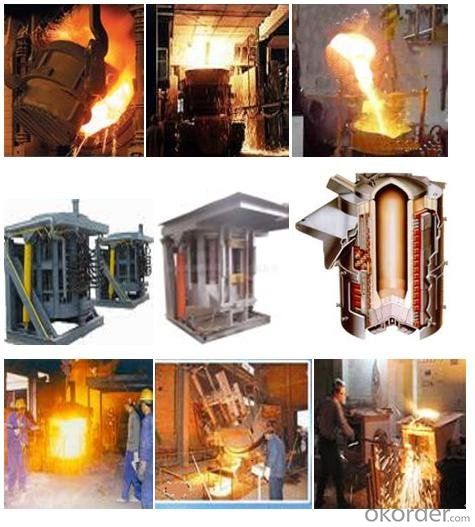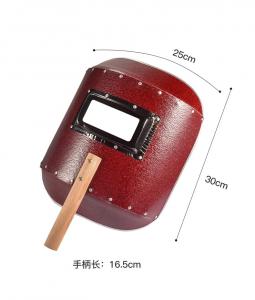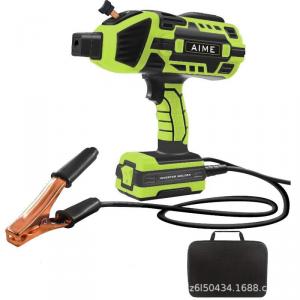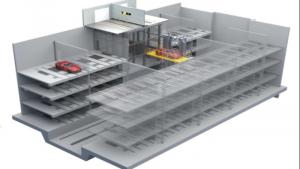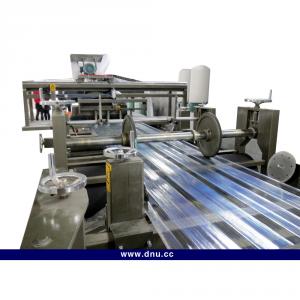Loading Port:Qingdao
Payment Terms:TT OR LC
Min Order Qty:-
Supply Capability:-
| Packaging Detail: | normal export package |
| Delivery Detail: | 3-6 months |
1.casting,melting
2.medium frequency melting furnace
3.steel shell mf furnace
4.energy saveing mf furnace
5.keep temperature
5-60t Medium Frequency Induction Furnace MF Induction Furnace
1. casting, melting metals mf furnace
2. keep temperature mf furnace
3. steel shell mf furnace
4. energy saving mf furnace
5. AC power: work, medium, high frequncy mf furnace
6. melting many metals
Character
1. Induction furnace is an electrical furnace in which the heat is applied by induction heating of metal. It is a clean, energy-efficient and well-controllable melting process compared to most other means of metal melting.
2. Induction furnace capacities range from less than one kilogram to one hundred tonnes capacity and are used to melt iron and steel, copper, aluminium and precious metals. Since no arc or combustion is used, the temperature of the material is no higher than required to melt it; this can prevent loss of valuable alloying elements.
3. Operating frequencies range from utility frequency (50 or 60 Hz) to 10000 kHz or higher, usually depending on the material being melted, the capacity (volume) of the furnace and the melting speed required. Generally, the smaller the volume of the melts, the higher the frequency of the furnace used; this is due to the skin depth which is a measure of the distance an alternating current can penetrate beneath the surface of a conductor. For the same conductivity, the higher frequencies have a shallow skin depth - that is less penetration into the melt. Lower frequencies can generate stirring or turbulence in the metal.
4. A preheated, 1-tonne furnace melting iron can melt cold charge to tapping readiness within an hour. Power supplies range from 10 kW to 15 MW, with melt sizes of 20 kg to 30 tonne of metal respectively.
5. An operating induction furnace usually emits a hum or whine (due to magnetostriction), the pitch of which can be used by operators to identify whether the furnace is operating correctly or at what power level.
Specification
| Furnace Model | Rated Capacity (T) | Max Capacity (T) | Rated Power (KW) | Rated Frequency (KHZ) | Voltage (V) | Output Voltage (V) | Oven Voltage (V) | Pulses | Melting Rate (T/H) | Melting Time (Min/Furnace) | Energy Consumption (KWH) | Transformer Capacity (KVA) | Water Cooling (T/H) |
| GW-10-6000/0.5 | 10 | 11 | 6000 | 0.5 | 1000 | 1650 | 3400 | 12 | 9 | 75 | 500 | 6300 | 80 |
| GW-12-7500/0.25 | 12 | 13 | 7500 | 0.25 | 1000 | 1650 | 3400 | 12 | 10 | 75 | 500 | 8000 | 100 |
| GW-15-9000/0.25 | 15 | 16 | 9000 | 0.25 | 1000 | 1650 | 3400 | 12 | 13 | 75 | 480 | 9000 | 130 |
| GW-20-12000/0.25 | 20 | 22 | 12000 | 0.25 | 1000 | 1650 | 3400 | 24 | 15 | 80 | 460 | 12000 | 180 |
| GW-25-15000/0.25 | 25 | 27 | 15000 | 0.25 | 1000 | 1650 | 3400 | 24 | 18 | 90 | 450 | 15000 | 220 |
| GW-30-18000/0.15 | 30 | 32 | 18000 | 0.15 | 1000 | 1650 | 3400 | 24 | 20 | 100 | 450 | 18000 | 280 |
| GW-40-25000/0.15 | 40 | 43 | 25000 | 0.15 | 1000 | 1650 | 3400 | 48 | 25 | 100 | 440 | 20000 | 380 |
| GW-50-30000/0.15 | 50 | 53 | 30000 | 0.15 | 1000 | 1650 | 3400 | 48 | 30 | 100 | 430 | 22000 | 480 |
